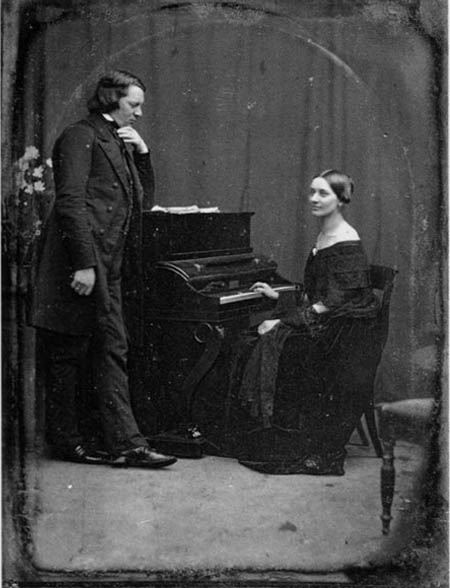Robert Schumann: Piano Concerto in A minor, Opus 54
by Mana Tokuno
Schumann’s music has always resonated strongly with me, perhaps because of its impulsive, passionate, yet private nature.
From his youth Schumann was a fast writer, as if the music just streamed out of him. This concerto was no exception.
The first movement originally took shape as a single-movement Fantasy for Piano and Orchestra in 1841. Following the prolific “Year of Song” in 1840, which produced nearly 140 songs around the time of his long-desired marriage to Clara, Schumann seems to have been in a state of almost manic rapture and celebration. Up to 1840, he wrote almost exclusively for solo piano, but starting with those songs, he extended his media to chamber music, then to symphonies in the following year. The Fantasy was sketched within a matter of ten days in May, orchestrated immediately after in a few days, then revised slightly in August with a prospective performance in mind.
The main motif derives from a coded name of Clara. Years before, as a member of the Davidsbündler (League of David), a music society Schumann had created, Clara was given the name “Chiarina.” All the musical letters from the name become the motif: C-H(B-natural in German)-A-A. Throughout the movement, the name is called, in most cases, tenderly and blissfully.
The present form of the Concerto was finalized in 1845, with the addition of two other movements. The third movement, an exultant and noble Rondo was composed first in June, then the sweet and dreamy Intermezzo as a bridge to the Rondo was inserted in July. The recalling C-H-A-A motif gives the whole concerto a total coherence.
Though passionate and dynamic in many places, the concerto conveys an intimacy throughout as if the piano were embraced by the orchestra. Even the piano solo part is never demonstrative or equal to the orchestra, but rather complementary and corresponding. Using her name as motif and having Clara in mind as the soloist of this concerto, I feel this was the natural way for Schumann to demonstrate and honor his love for her.
I would also like to mention two sections that I feel are special in this concerto.
The first one is in the development of the first movement. After the powerful orchestra tutti, the music calms down and the piano starts a nocturne-like passage with an arpeggiated left hand and the C-H-A-A motif in the right hand. There, piano and orchestra weave an intimate conversation in A-flat major —a strange choice of key for an A minor piece. During the time of separation before their marriage, Robert and Clara were mirroring the roles of Florenstan and Leonore in Beethoven’s opera Fidelio. Just as Leonore disguised herself as a guardsman at the prison where Florenstan was kept in order to rescue him, Clara was using a man’s name to exchange letters with Robert. In the opera, Florestan sees a vision of Leonora coming to rescue him and sings the Aria “In the Spring Days of Life,” before he falls asleep. The opening of the aria is in A-flat major and has exactly the same motif you will hear in the concerto.
The second one is in the middle of Intermezzo where we hear a beautiful cello melody. The melody is warm, passionate, and expansive. It lingers at the end, always giving room for the piano to finish the sentence. And, here, the key is in C major — Clara’s key.
This is the piece written in the happiest and most successful period of Schumann’s life, and it is also a true love letter to Clara.
—Mana Tokuno

